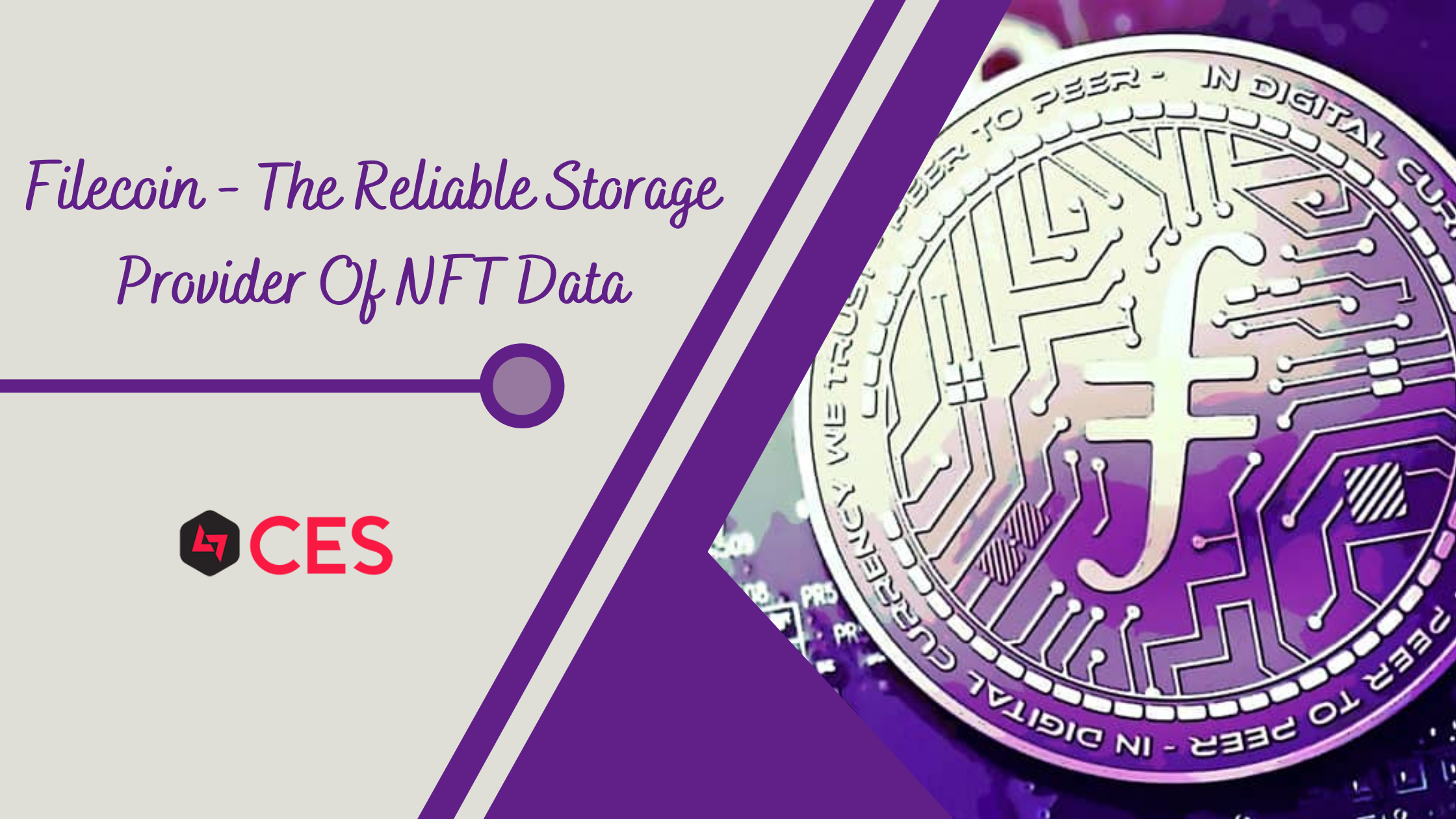Being the hottest concept in today’s crypto globe, NFTs have attained a brand-new phase since its launch. While everyone is busy talking about the trading of NFTs or the development of NFT marketplaces, only a few of the crypto enthusiasts are aware of how long an NFT lives? Astonishing right? It is a hard truth that NFTs don’t permanently live on a blockchain. It is crucial to take care of the traded NFTs. It is duly the buyer’s responsibility to safeguard and store the NFTs. Recently, 3LAU, a musician, was popular among the crypto world as his NFT music album was sold for about $11 million. The shocking news is that that particular NFT is missing now. Though one could find a copy of the sold NFT in the marketplace (NiftyGateway), the original NFT asset is not available online.
This is the point where Filecoin makes its entry. It is a kind of decentralized storage network exquisitely framed and built to store the world’s most imperative data. This informative blog makes you aware of Filecoin and storing of NFTs as well.
An Overview Of Filecoin
Filecoin is basically a network that is used to store and retrieve data. The mighty and dynamic distributed cloud storage network facilitates the ability to store information. The data generally includes organisation files, public datasets, private data, podcast data, contract data, security archives, personal files, application data, video, dapp websites, and other website data. It is a superior network that amalgamates with IPFS (InterPlanetary File System), a P2P distributed protocol, thereby making the process more efficacious and safeguards web free from corporate control. Most importantly, the platform renders proof that the data being stored was absolutely fine and secure over time. It also allows anyone to get in the platform as a storage provider and make them compete for your business.
Why Does NFT Go Missing?
We all know that an NFT is literally a token generated using a particular blockchain standard, say, ERC-721 standard for Ethereum blockchain. It is a way of conceiving smart contracts on the Ethereum blockchain for what the data represents. The data could be anything such as artworks, digital collectibles, videos, or even moments from NBA Top Shots.
Here, it is mandatory to comprehend that the content and metatag of smart contracts of NFTs are stored separately while the data gets stored separately. The contracts are entirely different from the data, and this means that data could vanish while the contracts have the ability to exist. This is because the data is generally large in size, and it becomes arduous to store it on the Ethereum blockchain. This makes NFTs disappear after a particular period.
How To Jounce Off The Trouble?
The majority of people accept that IPFS is the best alternative to store NFTs. But the truth is IPFS is a system of addressing the data and not storing the data. If one has the link and the content ID, one would always be eligible to figure out the data if it still has the data. So the only solution is to ‘pin the data.’ Pinning the data means you are informing a content’s hash that you wish to store the file; it should be available anytime for access, and also, whoever is on the network will be able to gain access to the file. This is what Filecoin does. The data stored in it is reliable and secure. The cryptographic proofs acknowledge that your data is secure and unaltered over a period of time.
Features Of Filecoin
- Proof-f-Spacetime: It comprehensively validates the file or data stored is unchanged over the duration.
- Proof-Of-Replication: It comprehensively validates the total number of copies of a file or data that is stored.
- Verifiable Action: The platform affirms the evidence then and there. Also, promptly takes necessary action if required.
- Robust Safeguarding Of Data: All your data that is being uploaded will be entirely safeguarded and can be wholly trusted.
- Umpteen Varieties Of Data: It includes various kinds of data such as organisation files, public datasets, private data, podcast data, contract data, security archives, personal files, application data, video and much more.
The Use-Cases
Have a glance at the use-cases of Filecoin.
- Cloud Storage: The prime purpose of Filecoin is to serve the audience with an impulsive distributed cloud storage service.
- Decentralized Nature: The Filecoin platform is entirely decentralised and assists you in staying away from intermediaries or third parties.
- Smart Contract Storage: Automatic and secure storage for NFTs, escrow, financial institutions, insurance, games etc.
- Algorithmic Storage Market: The platform brings down the storage prices by letting in the providers from all the sources, even the newbies who yearn to bring the latent storage online.
- Algorithmic CDN: Filecoin leverages content delivery networks all over the globe.
Benefits Of Filecoin
- Offers a great deal of flexibility
- Entirety scalable
- Robust and reliable storage services
- A global open-source
- Personalised to meet the essentials
- A developer’s playground
Bottom Line
Thus, Filecoin diminishes the obstacles for the entry of storage providers by transforming cloud storage into a commodity. This enables the participants to have mutual contests to bestow the storage facility for your data. And moreover, this hypercompetitive marketplace for storage is utterly transparent and indeed the best way to store your NFT data. Some of their leading customers include Wikipedia, OpenStreetMap, gnomAD, project Gutenberg, and much more.
Stay updated with Cryptocurrency Exchange Script for more such informative blogs. We take this as a chance to make you recognise the upcoming trend and concepts in the crypto globe.
